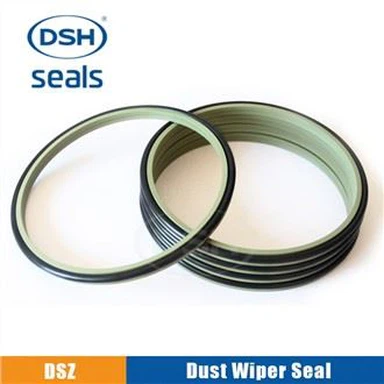How To Choose The Right Piston Rod Seal Correctly?
Feb 14, 2022
The seal structure and seal for the piston rod are the key components in the reciprocating actuator. It is not only related to the leakage problem, but also affects the performance and life of the entire machinery and equipment. In the reciprocating motion actuator, the piston rod mainly bears a certain axial force, and reciprocates at a certain speed to perform external work. With the development of science, technology and industry, the requirements for reciprocating motion are getting higher and higher, especially in the case of high pressure and high speed motion, the problem of sealing structure and sealing parts for piston rod is particularly important.
In the past, the sealing of the piston rod used O-shaped seals, narrow-section Y-shaped seals and V-shaped seals. Due to the dry friction between the piston rod and the seal, these seal types often lead to premature wear of the seal lip due to the high friction resistance. The commonly used rod sealing structures and seals have relatively low allowable movement speeds, so they are widely used in occasions where the movement speed is not high, such as construction machinery, metallurgical equipment and hydraulic equipment for light industry and agricultural machinery.
Combined seals, such as K-type step seals, are composed of two different elements: one is a stepped seal (main seal) made of polytetraethylene with bronze filler, and the other is an O-ring seal (elastic element). and side sealing effect). Combined seals feature low friction, no creep at start-up, extremely low leakage and wear resistance. The combined application of seals avoids the contact between metals, improves the bearing capacity and bears a certain lateral force, with low friction, suitable for high-pressure and high-speed systems, and has been confirmed by tests.







